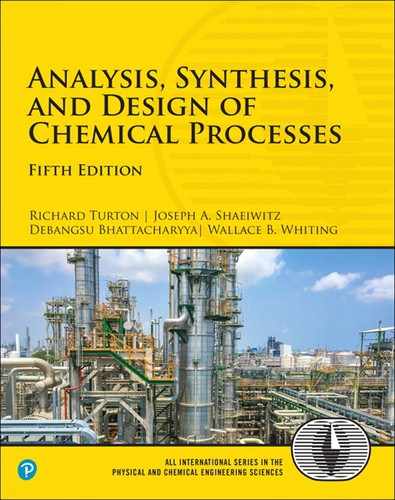Section V: The Impact of Chemical Engineering Design on Society
Throughout this book, the focus has been on the role that a chemical engineer plays in the analysis, synthesis, and design of chemical processes. In this section, that role is put in the context of the profession of chemical engineering, which is defined by the American Institute of Chemical Engineers as “the profession in which a knowledge of mathematics, chemistry, and other natural science gained by study, experience, and practice is applied with judgment to develop economic ways of using materials and energy for the benefit of mankind.”
Far from being the “soft” side of engineering, the topics in this section are very much the crucial steps between a design in the mind of the engineer and the realization of a new or improved process or product in the service of humanity. In the past 30 years, the importance of the impact of chemical engineering design on society in terms of how the chemical process industry and chemical engineers are viewed has increased dramatically. No longer is being a “good engineer” defined by the ability to solve complicated process problems correctly. Instead, a company’s reputation and success are often measured in terms of its track record in operating environmentally friendly processes, its ability to find innovative solutions to existing problems, its safety record, and its ability to develop new products. Chemical engineers are responsible for all these initiatives, and the success of modern engineers is based in large part on their contributions to these areas.
In this section, focus is placed on the engineer’s ability to
Gain the necessary experience and knowledge
Earn the trust of society
Ensure that the process and products are safe
Protect the environment
Continue to look for new processes that are less harmful to the environment and that pose less risk to society
Work with other engineers and professionals to bring new chemical-engineering-based products to the marketplace
Chapter 25: Ethics and Professionalism
Engineering problem solving within an ethical framework, legal responsibilities, and professional registration are developed. Ethics case studies and the content of the Fundamentals of Engineering (FE) and Professional Engineering (PE) examinations are included.
Chapter 26: Health, Safety, and the Environment
Methods of analyzing risk are provided, and the basic types of health, safety, and environmental regulations are explained, with references to government databases. Pollution prevention strategies and the assessment of plant safety are introduced through their relationships to HAZard and OPerability (HAZOP) studies, the Dow Fire and Explosion Index, and the Dow Chemical Hazards Index.
A brief introduction to green engineering design methods—including the pollution prevention hierarchy, green chemistry principles, and flowsheet analysis for pollution prevention—is discussed. Examples of the economics of pollution prevention activities using the profitability methods in Chapter 10 and life cycle analysis are presented. Brief descriptions of environmental risk assessment, analysis of releases, and the software available to do this analysis are given.
